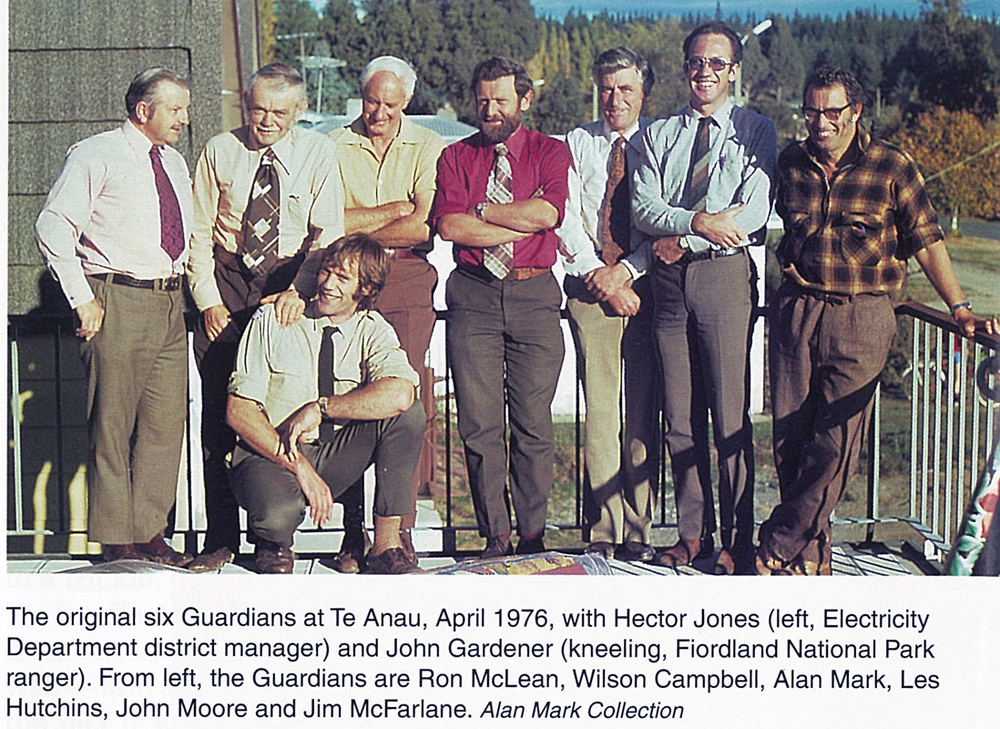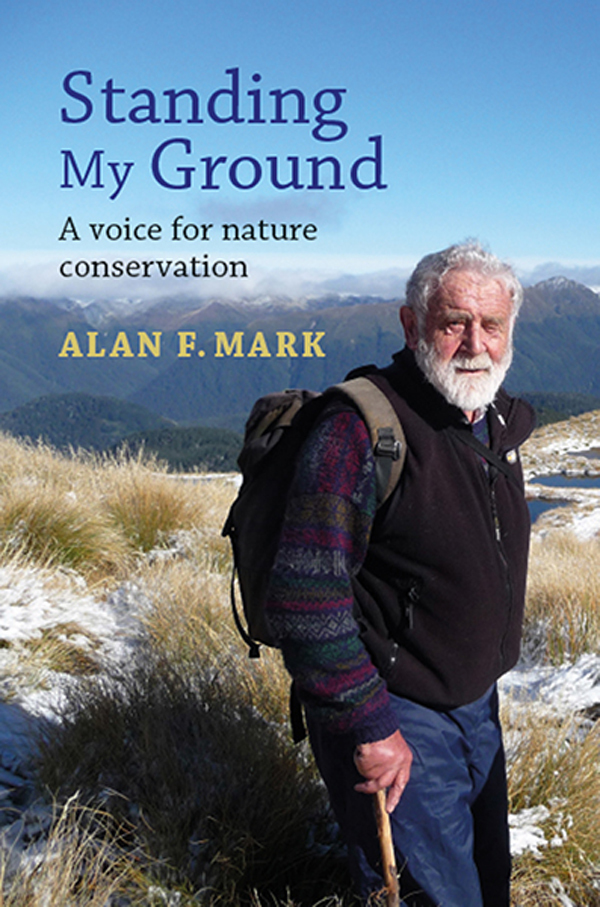Sir Alan Mark to turn 90
Alina Suchanski
03 June 2022, 5:00 AM
 Prof Sir Alan Mark with his revised book Above the Treeline: A nature guide to alpine New Zealand, published last October. Photo: Bridget Mark
Prof Sir Alan Mark with his revised book Above the Treeline: A nature guide to alpine New Zealand, published last October. Photo: Bridget MarkProfessor Emeritus, Sir Alan Mark, one of New Zealand’s leading plant ecologists, a botanist, environmentalist, scholar and New Zealand’s first recipient of knighthood for services to conservation, is about to celebrate his 90th birthday.
Fiordland and Southland have a lot to be grateful for to this man.
Not only was he instrumental in saving Lakes Manapouri and Te Anau from serious environmental destruction, but also negotiated protection of 1500 hectares of red tussock land on Gorge Hill from being ploughed up for farming.
A patron and supporter of many environmental campaigns, he is still using his scientific knowledge and experience to ensure that our unique natural assets remain protected for future generations.
Born Alan Francis Mark in 1932 in Dunedin, he was the first person in his family to go to university.
He studied botany at Otago and completed his PhD at Duke University in North Carolina, USA. On his return he was employed as the ecologist in the Botany Department at Otago University.
In 1955, soon after the Homer Tunnel was opened, 23-year-old Alan and a fellow botany student went to Milford on motorbikes, a visit that made a big impression on young Alan.
Little did he know that 14 years later he would be embroiled in the campaign against a government proposal of raising the level of lakes Manapouri and Te Anau to build a hydroelectric power station.
In 1969 the government asked Mark to conduct a study to assess the likely environmental impact of a lake rise.
“At that time I was researching the snow tussock grasslands in high country, so this request came completely out of the blue, but we went for it,” he said.
This was his introduction to conservation issues.
It was largely Prof Mark’s and his research student, Peter Johnson’s, environmental impact report that saved Manapouri from obliteration when the government of the time planned to raise the level of Lake Manapouri by 24 metres to that of Lake Te Anau.
What followed was the 4-year period (1969-1972) of ecological studies, public meetings and political lobbying.
The Save Manapouri campaign was a significant 1972 election issue which resulted in the change of the government from National to Labour.

The original 1972 Guardians of the Lakes with Alan Mark in the centre. Photo: Supplied
The new government promised to leave the lake levels unaltered and appointed the Guardians of the Lakes to monitor the use of the lakes by the Manapouri power station.
Sir Alan was the Guardians’ first chairman, a position he held for 26 years.
He is a Forest & Bird Conservation Ambassador and was its president between 1987 and 1990. He was made a fellow of the Royal Society of New Zealand in 1987 and was a member of National Parks and Reserves Authority and later the NZ Conservation Authority.
In Te Anau Sir Alan is a member of Leslie Hutchins Conservation Foundation and a patron of the Pomona Island Restoration Trust.
In 2013-2014 he acted as a patron for the Save Fiordland campaign against the proposals of building of the Milford Dart tunnel and the Fiordland Link monorail through the Snowdon Forest classified as a World Heritage Area.
Another of his causes was the Mid-Dome Wilding Trees Charitable Trust which had led wilding tree control over thousands of hectares in Southland, making huge inroads to the problem.
“Otago University gave me an Honorary Doctorate of Science, which I cherish. It’s indicative of the continuous support by the University for my efforts,” he said.
A lifetime patron and supporter of many environmental campaigns, he is still using his scientific knowledge and experience to ensure that our unique natural assets remain protected for future generations.
In 2009 he was the first New Zealander to be knighted for his services to conservation.

The book cover of Prof Sir Alan Mark’s autobiography published in 2015. Photo: Supplied
In his autobiography published in 2015 and titled Standing My Ground: A voice for nature conservation, Sir Alan gives an account of his life and work – a career that has spanned over five decades with his two main fields of research being snow-tussock grasslands and lakeshore ecology.
Sir Alan’s biography documents important conservation battles and tells the story of a genuinely humble man who is one of the most outstanding New Zealanders in his field.
He was a chair of the Wise Response group, and although he stood down from the role in 2021, he remains the group’s patron alongside Sir Geoffrey Palmer.
Since then, he has dedicated his time to tenure review, which has ended on 18 May 2022, when the Crown Pastoral Land Reform Act came into effect.
He had also been busy reviewing his book on alpine plants Above the Treeline: A nature guide to alpine New Zealand, first published in 2012. The revised, expanded version came out in October 2021 and to date sold more than 1000 copies.
Sir Alan is pleased to see the increased appreciation by New Zealand public of the environmental issues and their willingness to fight for it.
He believes that the secret to his longevity and maintaining a sharp mind lies in keeping active, both physically and mentally.
“I’ve been lucky to have good health and the grey matter working reasonably well. I’ve done a lot of work in the field, sometimes quite strenuous, like walking in high mountains. I’ve also been busy mentally, writing books, papers, submissions and giving speeches,” he said.
These days Sir Alan seldom visits Fiordland. He has passed his Manapouri holiday home over to the next generation.
At nearly 90, with four children, nine grandchildren, and three great-grandchildren, Sir Alan has no plans to give up his passion for conservation.
He still has a room at Otago University Department of Botany, where he can work on his projects.
He will celebrate his 90th birthday on 19 June at the Otago University Staff Club, with over 60 invited guests.




